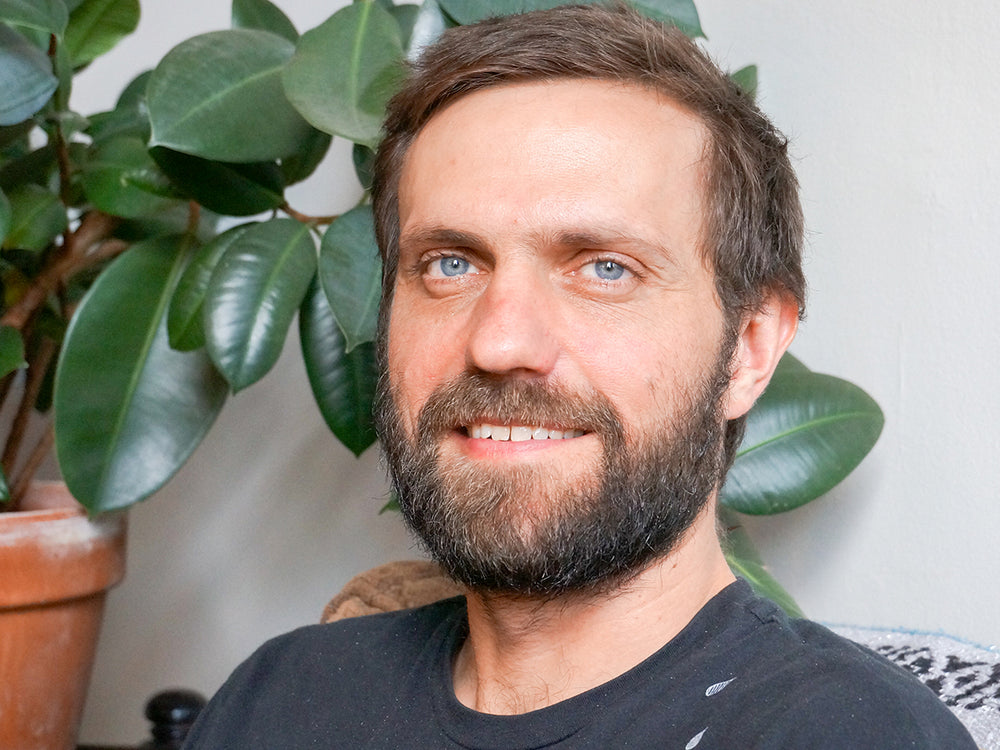
At Work With: Myles Estey, Makeshift

If you listened to this weekend’s The Stack on Monocle24 you’d have heard me and Rob from Delayed Gratification highlight the new redesigned Makeshift, a quarterly magazine that specialises in uncovering stories of hidden creativity from across the world. So I’m pleased to look ahead at the new week through the eyes of the magazine’s editor in chief Myles Estey.

Where are you today?
I’ve been living in Mexico City for several years now, but am currently staying at a friend’s place in New York for of , which has been a really enjoyable change of pace.
What can you see from the window?
A bunch of people loitering on benches, a pigeon on a fire escape and a surprising amount of trees.
Are you a morning or evening person?
Evening, for sure. I love being up early, but don’t always practice it. Afternoons are my worst time. Luckily, I tend to get a second/third wind sometime in the evening, and often crank out my best work between 7 pm and midnight.

What’s your favourite magazine this morning?
Honestly, loving The Surfer’s Journal. Sports photography has evolved into a true art form over the years, and TSJ is one of few sports magazine I know of that has stayed independent and pushed to fuse these incredible images with clever and innovative design—without the gaudy surf ads. I hadn’t picked it up for a while until yesterday.

You describe Makeshift as ‘one of a new breed of magazines passionate about their content, form and community.’ Which magazines do you have in mind?
When we started Makeshift, we unknowingly became a part of a community of fascinating publishers. Since then, groups like the Little Magazine Coalition and Indie Publisher Club have cropped up. We’re expert in different areas, but we share a passion that’s breathing new life into the medium. You can feel the difference in the way these magazines tell stories, lay them out on paper and screen, and build community around them. We’ve especially enjoyed trading tips with Offscreen and Hello Mr. Topically, they couldn’t be more different, and both are full-time one-man shops—the opposite of our virtual, part-time team—but we share common goals in a niche industry, so it helps to know how others are making things work.

With no fixed base and a highly global contributor list, do you have an idea where/who your readers are?
Makeshift could never have survived 20 years ago. With the help of the internet and a dedicated team of 15 part-timers across six countries, we’ve developed a highly functional internal system to do all the things a business tends to, just without an office. Our readers tend to be more geographically stable than our editors and contributors. Most live in the United States, though we ship to places I’ve never heard of all the time. The best is when readers start pitching us stories from their nook of the world.

How do you source the unique and highly specific stories in the magazine?
There are a lot of nomads in our community. Fellow editors sometimes complain I’m one of them, prone to unpredictable movements. We’re lucky to count amazing contributors spread out across 80–90 countries, dedicated to working and traveling hard to uncover stories hidden to the mainstream media. Most are pitched to us now, but that wasn’t always the case. This network keeps us on our toes, chasing after a group recycling bomb metal in a Laotian mountain town, a man making his own spacesuit in Portland or a detective we heard is going deep undercover in Accra.

Your new issue has been redesigned by design studio Rifle. Describe the design brief and working process of the redesign.
We’ve been working with Santos Henarejos from Rifle from day one, so the redesign was natural for us. We told him Makeshift was shifting from a “journal of hidden creativity” to a “field guide.” We wanted a more portable size and a more fluid content structure, with how-tos and infographics sprinkled throughout. The process was extremely collaborative among the Makeshift team, the Rifle team, and our web teams at Openbox and Oak. We drew inspiration from nontraditional sources: old notebooks, warning labels, Japanese packaging. Ideas came from all ends and built on each other until you couldn’t recognize whose idea was whose. My favorite bit is the “navigator”—the timetable element that holds each article’s metadata; and then you also see it on the cover and in our website menu.
What are you most looking forward to this week?
Right now, articles are coming in for our upcoming Powering Up Issue (September 2014). I love working with the writers, shaping the drafts into polished articles; it’s always great to see stuff go from a pitch to a spreadsheet to a long email chain to a final product, fully laid out in the proofs. Next week, I am going to spend some time with my family in Canada for the first time this year, and I’m really excited about that.
What are you least looking forward to this week?
I have been putting off some accounting and related things for way too long and really have to get down to it.
What will you be doing after this chat?
I am really hungry, and I hope to repair that in the most delicious way possible.


